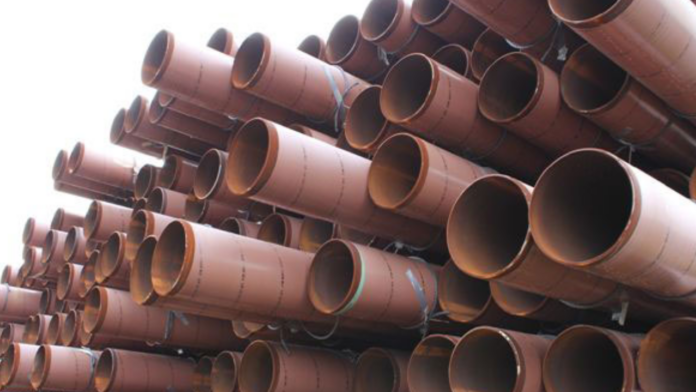Oil and natural gas are transported via API 5L Line X46 pipes, which improves the effectiveness and dependability of the energy infrastructure. Thorough Inspection and testing procedures are crucial to ensuring the operation and safety of these crucial pipes.
We will examine the numerous inspection techniques and testing methods used for API 5L X46 Line Pipe in this extensive guide, shedding light on their relevance in assuring the reliability and longevity of energy transmission networks. So without any further delay let’s get started.
Testing and API 5L X46 Line Pipes Inspection
Testing for Hydrostatic Pressure
Testing hydrostatically is an important aspect of API 5L line pipe manufacturing since it ensures the pipes’ leak-free performance and capacity to sustain internal pressure. Hydrostatic testing is performed on the pipes prior to coating or to check out leakage.
During this test, water is poured into the pipe at a predefined pressure and retained for a specified time of time. Inspectors thoroughly inspect the pipes for signs of leaking. If there are no leaks, the pressure is gradually reduced and cooling is permitted for the pipe.
Bending Test
When producing Pipes that are API 5L the bending test is a crucial quality control procedure that assesses the pipes’ resistance to cracks. A portion of the pipe is bent until it cracks, at which point it is meticulously examined to see if it satisfies the exacting standards for production.
This test makes sure the pipes are structurally sound enough to withstand the demands of energy transport. The pipe is rejected and additional corrective measures are taken to maintain the highest quality standards if a crack does not meet the requirements.
Flattening Test
Another crucial inspection step used to ensure the flatness of Pipes that are API 5L is the flattening test. Inspectors subject a section of pipe to flex under specific circumstances, as well as the variations in the circumference and longitudinal dimensions.
The pipe’s suitability for its intended use is determined by the results of the flattening test. The pipes’ overall performance and safety during energy transportation operations are improved by making sure they adhere to flatness specifications.
CVN Impact Test
When producing Pipes that are API 5 the CVN impact test is a crucial evaluation that assesses the material’s resilience and risk of brittle fracture. A regulated load is applied on a sample of steel pipe. And the toughness of the pipe is assessed at the body, weld, and heat-affected zone.
The resulting CVN value gives information about the material’s resistance to shocks and impacts. The API 5L Line X46 pipe’s finished ability to withstand the challenges posed by its intended use and environmental conditions is ensured by the impact test, a crucial quality control procedure.
DWT Test for PSL-2 Welded Pipe
Large-diameter steel pipes are frequently put to the weight-drop test for tears (DWT), especially when PSL-2 welded pipes are being produced. The DWT test involves a weight being dropped upon a pipe sample, determining the size of the resulting crack and contrasting it to API 5L standards.
This test makes sure the pipes meet the necessary requirements and can reliably transport oil and gas by evaluating their capacity to withstand potential stresses and pressures. This test ensures the pipe’s integrity so that any defects can be fixed or replaced.
Other important inspections
- Positive Material Identification (PMI) to verify the chemical composition of API 5L X46 line pipes.
- Dimensional Inspection to verify that API 5L Line X46 pipes meet the specified size and dimensional requirements.
- Coating and Surface Inspection to ensure long-term protection against corrosion and environmental damage.
- Visual Inspection Visual inspection is a straightforward yet crucial part of API 5L Line X46 pipe testing and inspection.
Conclusion
Testing and inspection are integral steps in ensuring the safety, reliability, and durability of API 5L Line X46pipes. Hydrostatic testing, bending test, flattening test, CVN impact test, DWT test, positive material identification, dimensional inspection, coating, and surface inspection collectively ensure that the finished pipes meet the highest quality standards.










